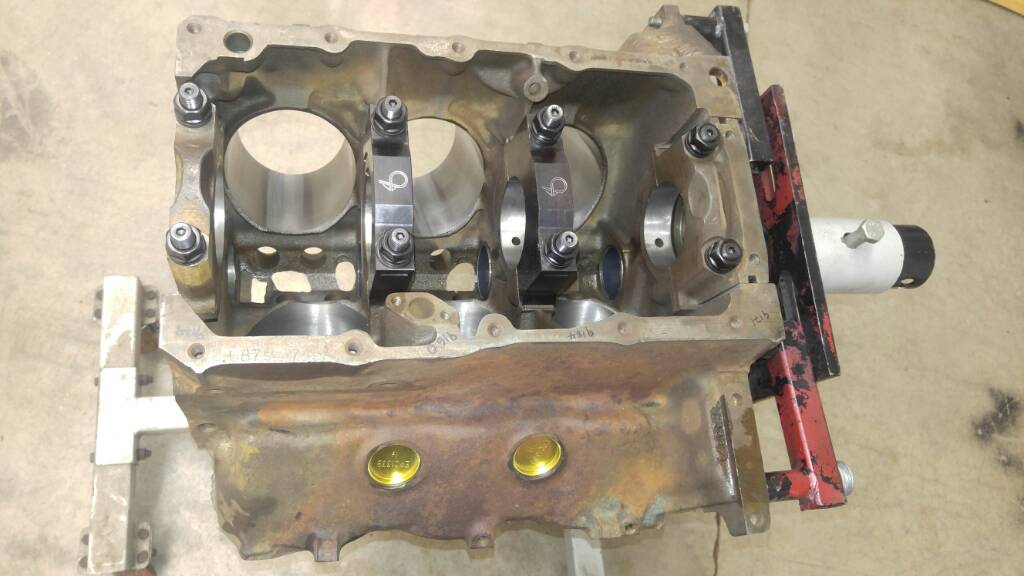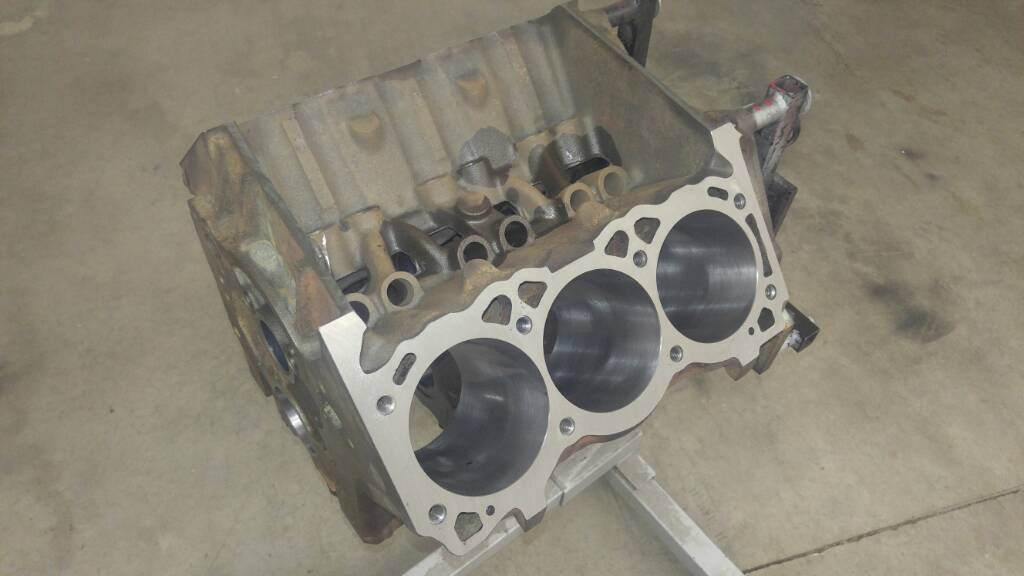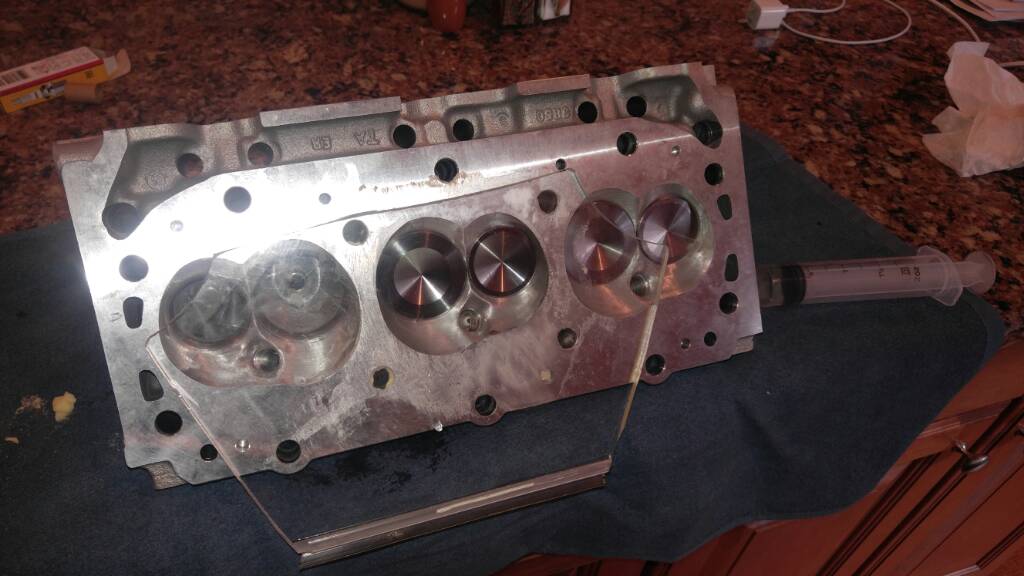achalmersman
Well-Known Member
- Joined
- May 28, 2012
Well I figured it may be fun to document my 4.1 build in a thread. I have chosen to build a 291 block that I acquired a couple of years ago. Just got the block back from the machine shop so now I'm going to start thinking about the rotating assembly.
Machine work so far was done by Bill Coleman in Lithicum Maryland. Nice guy. I have him the block and asked him to check it over, final hone to 4" (was at 3.995), fit, bore and hone 2 new billet center caps with ARP studs, counter bore head bolt holes, drill and tap turbo return drain, clean up valley casting flash, etc. Found deck wasn't square so after squaring deck I finished with a deck height of 9.519". He installed my TA dual groove coated cam bearings and brass freeze plugs. The billet center caps came from David Husek
So next I need to figure out for sure what pistons, crank, and rods I want. Probably going to be a stroker 4340 crank and molnar rods from David Husek. I just haven't decided if I want to do a long rod combo. I probably will and welcome any tech discussion in this thread. I will probably be shooting for 9.5:1 compression
I have a set of aluminum CNC ported TA SE heads from Nick Micale that will reside on top of this engine as well as an intake ported to match by Nick. I also have a TA blueprinted front cover with oil pump assy from Nick.
Cam and turbo will be speced and bought from Bison. Don't have either yet. I doubt I will reuse my PTE Gen2 6266 S cover unless I run out of funds and decide to see how far I can push it as well as collect good data. I plan to log all important data such as drive pressure, intercooler pressure drop, etc.
Fuel system will be a double pumper racetronix 680lph dual feeding champion rails with external regulator. Pump kit is the new design hangar with Quick Disconnect fittings and -6 and -8 Teflon coated lines (made by Don Cruz). All purchased from Don Cruz
Transmission was built a year and a half ago from a DIY kit and instruction by David Husek by myself and help from my father. The build was only intended to support mid 10s so we'll see how she does. It is David's standard build kit and the direct clutch pack is not dual fed. Much of my work on my car is made easier by use of my father's shop and help. He was a GM tech for 25 years and worked on these cars under warranty when they were new. Aftermarket and modifications are not his specialty but his help is still appreciated.
Again I encourage any tech related discussion. Next step I believe is going to be getting a rotating assembly and mocking up and clearancing where needed.


No trees were harmed in the sending of this message, however, a significant number of electrons were terribly inconvenienced.
Machine work so far was done by Bill Coleman in Lithicum Maryland. Nice guy. I have him the block and asked him to check it over, final hone to 4" (was at 3.995), fit, bore and hone 2 new billet center caps with ARP studs, counter bore head bolt holes, drill and tap turbo return drain, clean up valley casting flash, etc. Found deck wasn't square so after squaring deck I finished with a deck height of 9.519". He installed my TA dual groove coated cam bearings and brass freeze plugs. The billet center caps came from David Husek
So next I need to figure out for sure what pistons, crank, and rods I want. Probably going to be a stroker 4340 crank and molnar rods from David Husek. I just haven't decided if I want to do a long rod combo. I probably will and welcome any tech discussion in this thread. I will probably be shooting for 9.5:1 compression
I have a set of aluminum CNC ported TA SE heads from Nick Micale that will reside on top of this engine as well as an intake ported to match by Nick. I also have a TA blueprinted front cover with oil pump assy from Nick.
Cam and turbo will be speced and bought from Bison. Don't have either yet. I doubt I will reuse my PTE Gen2 6266 S cover unless I run out of funds and decide to see how far I can push it as well as collect good data. I plan to log all important data such as drive pressure, intercooler pressure drop, etc.
Fuel system will be a double pumper racetronix 680lph dual feeding champion rails with external regulator. Pump kit is the new design hangar with Quick Disconnect fittings and -6 and -8 Teflon coated lines (made by Don Cruz). All purchased from Don Cruz
Transmission was built a year and a half ago from a DIY kit and instruction by David Husek by myself and help from my father. The build was only intended to support mid 10s so we'll see how she does. It is David's standard build kit and the direct clutch pack is not dual fed. Much of my work on my car is made easier by use of my father's shop and help. He was a GM tech for 25 years and worked on these cars under warranty when they were new. Aftermarket and modifications are not his specialty but his help is still appreciated.
Again I encourage any tech related discussion. Next step I believe is going to be getting a rotating assembly and mocking up and clearancing where needed.


No trees were harmed in the sending of this message, however, a significant number of electrons were terribly inconvenienced.
Last edited:

